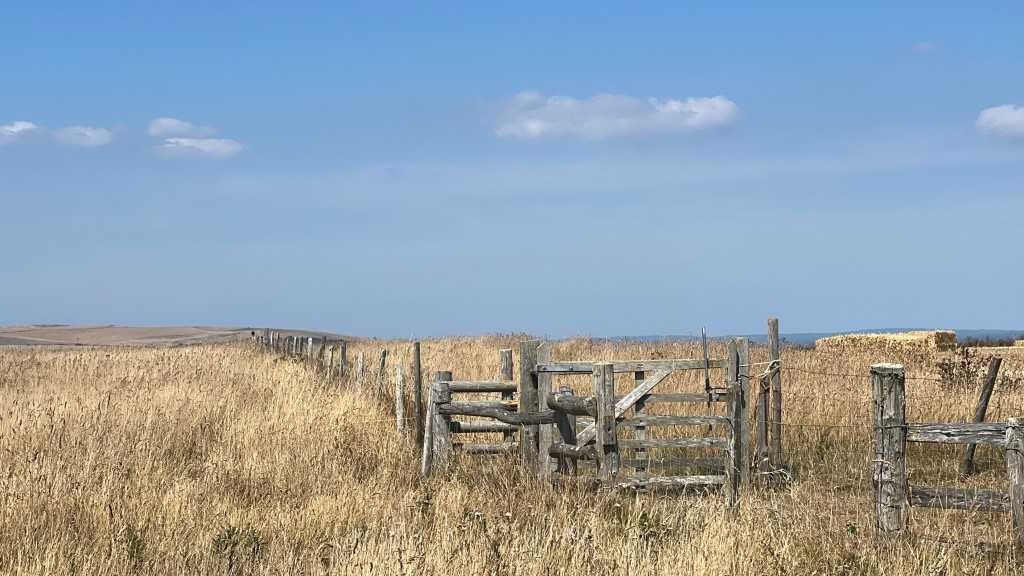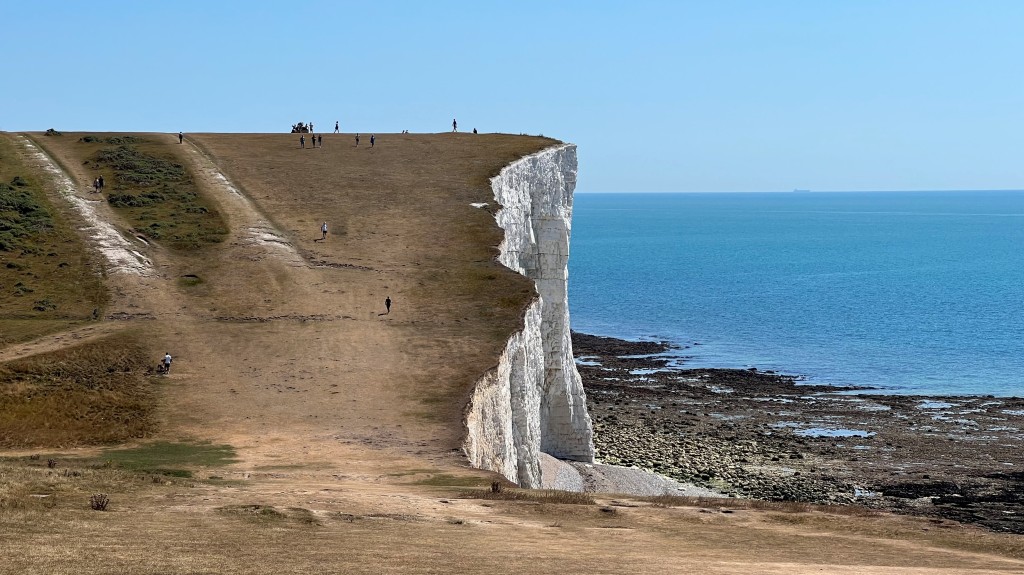
I took the above photograph whilst standing on so-called «access land» – the land to the left of the fence.
In England and Wales hikers explore the countryside using public footpaths or bridleways. You have to stick to these rights of way, but since they criss-cross nearly every square kilometre of the land you’ll generally find one going roughly where you want to go. In addition to public footpaths, the Countryside and Rights of Way Act 2000 granted a more general right to roam in uncultivated areas such as moors, mountains, hills and heaths. In other words, it created the access land I mentioned in my first paragraph.
[Scotland has a right to roam on all land, except for private gardens and the like, and with the proviso that you mustn’t do any damage – eg to fences and crops.]
The access land in the photo sits on a range of low hills in southeast England called the South Downs. Human beings use the Downs for leisure. Animals and plants live on them – and some humans also farm them, as you can see from the hay bales to the right of the fence. In an ideal rewilded world the Downs would have tree cover or at least a mix of trees and open spaces – but the UK lost much of its woodland many centuries ago. The grassland does at least provide a habitat for chalk-loving flowers and, in fairness, the Downs do have tree cover further to the west.
As you can see, the recent and continuing hot weather has desiccated the landscape. Even the wood of the fence looks bleached by the sun. In southern England we’ll soon find ourselves short of water – and I guess they’ll ban hosepipes before long.

I took the above about a kilometre south of the first photo. It shows one of the Seven Sisters – a series of seven humped and chalky cliffs extending for several kilometres along the coast. It also shows a lot of people walking on this particular «sister».
If you live only forty-five minutes’ drive from it – as I do – you take this remarkable coastline for granted. Yet I can’t think of many other places where you’d see white cliffs like these. They attract visitors from all over the world. If you eavesdropped on the tiny figures in the photo you’d hear a dozen different languages: Chinese and Japanese predominantly – but also German, French, American English, etc. The visitors’ youth strikes the observer as much as their linguistic diversity. Does any other tourist spot attract almost exclusively youngsters? Perhaps they converge here from language schools in London and Brighton? Maybe their tutors have recommended that they come here? I have theories, but none seems totally plausible. In any case, many young native Brits come here too. I guess like attracts like.
Southern England has no rugged uplands, so if you want dramatic scenery you need to make your way here. The accumulated altitude gained and lost as you pass over each sister in turn makes for a strenuous walk – but anybody accustomed to actual mountains will take this ramble in their stride.
